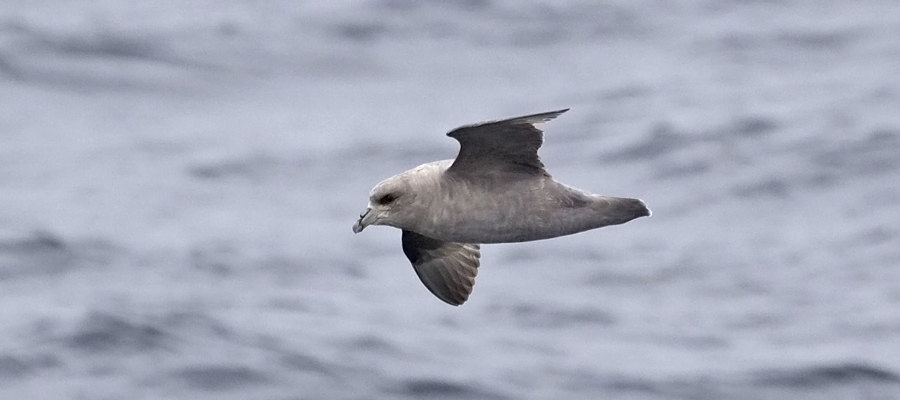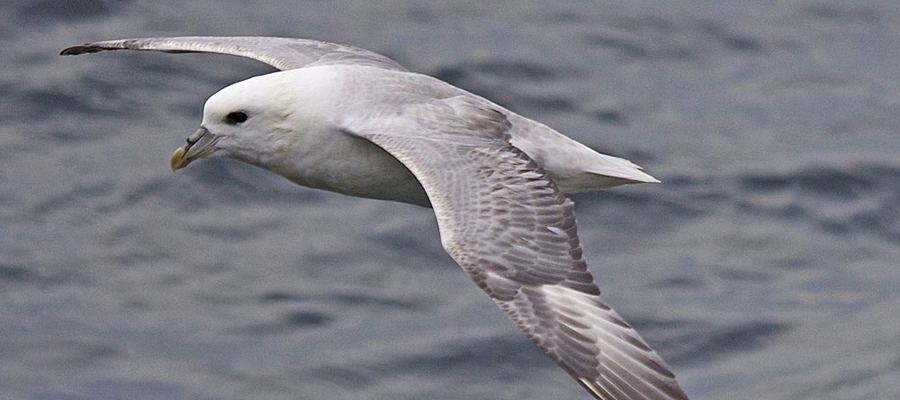Northern Fulmar
(Fulmarus glacialis)
Fulmars, though never common, are seen regularly from mid-September through mid-May but are absent from our area in Summer.
Every so often on one of our whale watches, we get to see the Northern Fulmar. Personally, I searched for these birds for years without seeing one. Fulmars seem to go through spells of being common for few years and then rare for a few. In that respect, I guess they are not unlike other birds (or whales for that matter) such as Cory’s Shearwaters that also vary greatly in abundance from year to year. Two isolated populations of Northern Fulmars exist in the northern hemisphere: one in the Pacific that breeds in Alaska and winters throughout the North Pacific, and a second population that breeds in the Arctic and eastern Canada that winters throughout the North Atlantic.
It is members of this North Atlantic population that sometimes wander as far south as Gloucester, MA. Although at this point the Atlantic and Pacific birds are considered the same species, differences in bill size, voice, and other attributes could lead to the “splitting” of the Northern Fulmar into two distinct species in the future.
Atlantic birds, as well as Pacific birds, occur in both “light” and “dark” phases with intermediates being quite common. “Light phase” birds are more abundant than “dark phase” birds in the North Atlantic, while in the North Pacific (Eastern North Pacific anyway… I’ve spent a lot of time in Alaska but never have I gotten to visit the western North Pacific) the reverse in true. At right you will see two photos of “light phase” Northern Fulmars. Notice that although they superficially resemble Herring Gulls, Fulmars are smaller, and more robust than Gulls, with thick, short bills. They also fly with stiff, more rapid wing-beats than Gulls.
If you look real close you may also be able to make out the Procellariiform “tube” on top of the bill which is very large in Fulmars. See “shearwaters and petrels” for a description of “Procellariiform.



